
What is Regulatory Compliance?

Recently, “regulatory compliance” has become a buzzword.
There has been so much noise around regulation that it’s easy to feel overwhelmed with all the information out there.
Let’s pause and take a step back to think about the basics of what Regulatory Compliance means for the compliance team.
What Is Regulatory Compliance?
No matter the industry or the company size, all businesses are obliged to follow regulations as part of their operations across different markets.
“Regulatory Compliance” is the process of meeting these regulatory requirements, ensuring your business is following all relevant laws, rules, and regulations.
This includes regulations from local, national, and international governments as well as industry standards.
It’s important that businesses have a strong understanding of their obligations under these laws so that they can operate in the safest and the most effective manner possible for their business, customers and employees.
Regulatory compliance has been around for a long time but has come into more of the limelight in recent years with a regulatory explosion with a 71% growth in the last 5 years. (See Figure 1, below: Source C2P)
While businesses expanded globally, launching different products and varied solutions, so has the chance of them missing out on complying with a regulation.
To ensure they don’t get hit by sudden non-compliance issues, companies have begun focusing on ‘regulatory compliance’.
Dedicated teams and budgets are allocated to ensure compliance with all regulations relevant to their business.
“The pace of change in regulation shows no sign of slowing down. Those working in the world of compliance face an ever-increasingly challenging environment as regulation strives to keep abreast of developments in technology, and the way we sell products, as well as tackle concerns for the environment and social impact of companies.“
Louise Forrest, Head of Knowledge Partners, Compliance & Risks
It’s important to remember that the word “compliance” is a verb. It’s something you do—not a thing you have. Compliance isn’t a static task that you can check off your list once and forget about forever. It’s a process, and it’s ongoing.
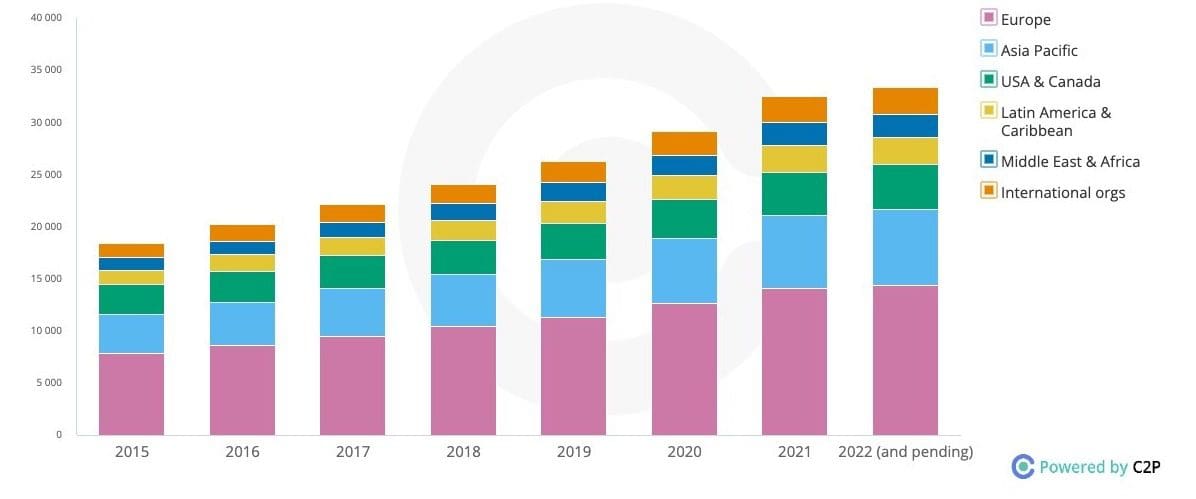
Now, Who Is A Regulator?
Parliaments enact laws, and the legislative and executive branches of the government enact regulations to give effect to the law.
To “regulate” means controlling or supervising using these rules and regulations.
Thus, while the legislative and executive branches of the government establish the laws, government agencies enforce these laws, ensure compliance, and track non-compliance.
Agencies act as regulators for their industries by creating guidelines and frameworks to help organizations successfully meet compliance requirements.
For example, the HHS offers HIPAA guidance materials outlining the HIPAA regulations and suggested safeguards to help covered entities (e.g. hospitals) implement HIPAA. Similarly, the SEC provides links to materials that outline the steps to SOX Section 404 compliance for small businesses.
The term “regulator” also acts as a shorthand for external auditors engaged by a regulatory agency to verify a company’s regulatory compliance posture.
What Are The Different Types Of Regulations?
Some of the most common types of regulations are:
- General Data Protection Regulation (GDPR)
- Sustainability & Environmental Regulations
- Product-specific Regulations
- Human Resources Regulations
- Health and Safety Regulations
Data Protection is a major issue in the digital age.
GDPR is designed to protect the personal data of European Union (EU) citizens and residents.
It regulates how this data can be collected, stored, and processed.
Governments design and implement policies which deal with a range of environmental issues including air quality, noise, industrial emissions, hazardous chemicals, and genetically modified organisms.
One of the most spoken about regulations this year is the EU Corporate Sustainability Reporting Directive (CSRD) – mandating businesses of a certain size to report in greater detail on sustainability issues such as environmental rights, social rights, human rights and governance factors.
These regulations are specific to manufactured products.
They include a number of areas of concern throughout the lifecycle of a product, from production and raw materials to disposal and distribution.
A few examples of product compliance regulations are the Restriction of Hazardous Substances (RoHS) Directive, the Registration, Evaluation, Authorisation and Restriction of Chemicals (REACH) Regulation & the California Safe Drinking Water and Toxic Enforcement Act of 1986 (Proposition 65).
Human resources regulations govern all aspects of employment including hiring, firing, promotions, benefits and wage and hour laws.
Equal Employment Opportunity regulations govern the recruitment, hiring and promotion of employees.
An example of such regulation is The Equal Employment Opportunity Act in the US which prohibits discrimination based on race, ethnicity, sex, religion, age and disability.
You can find more information about the Equal Employment Opportunity Act here: Equal Employment Opportunity Commission (EEOC)
Health and safety regulations are the rules and laws that are put in place to ensure that everyone has a safe working environment.
There are lots of different types of health and safety regulations.
Some of them include:
- Workplace safety
- Fire safety
- Chemical safety
- Electrical safety
- Food safety
- Personal protective equipment (PPE)
Benefits Of Complying With Regulations
- Uninterrupted global market access
- Protection from Lawsuits & Penalties
- Business Continuity and Competitiveness
- Company Reputation
- Increased Profitability
- Protection from cybersecurity threats
- Improving process efficiency
The consequences of not complying with regulations can be quite severe.
For example, suppose you’re not properly following health care regulations like HIPAA or OSHA rules around working conditions.
In that case, there could be serious repercussions such as fines or even prison time (if someone gets hurt at work).
It’s important to know all of the regulations that apply to your business so that you can avoid any issues or fines down the road. (See figure 2, below)
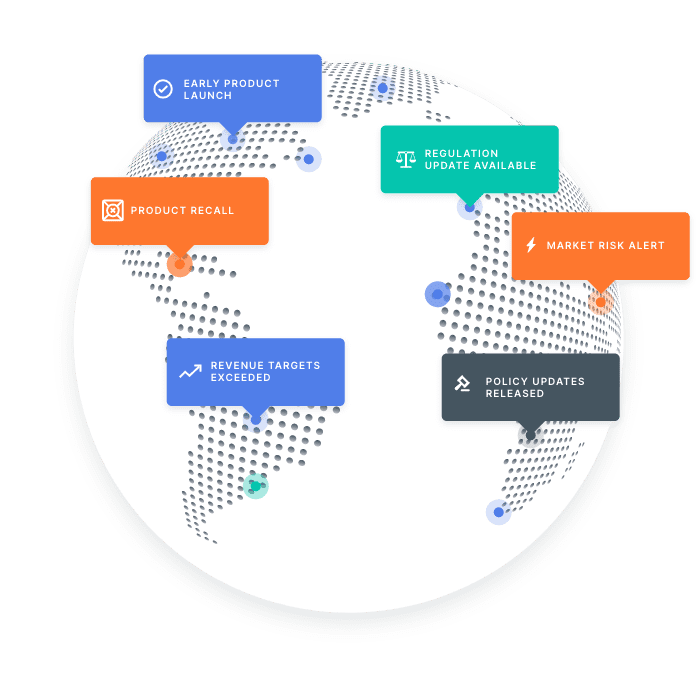
Regulatory Compliance Strategy
A regulatory compliance strategy is a plan of action to achieve compliance for your business.
The specific requirements of your compliance strategy can vary, depending largely on your industry and type of business. (see figure 3, below)
Regulatory compliance is shaped by your sector, your business and where you do business, too.
For example, GDPR is an important consideration for any business trading in Europe.
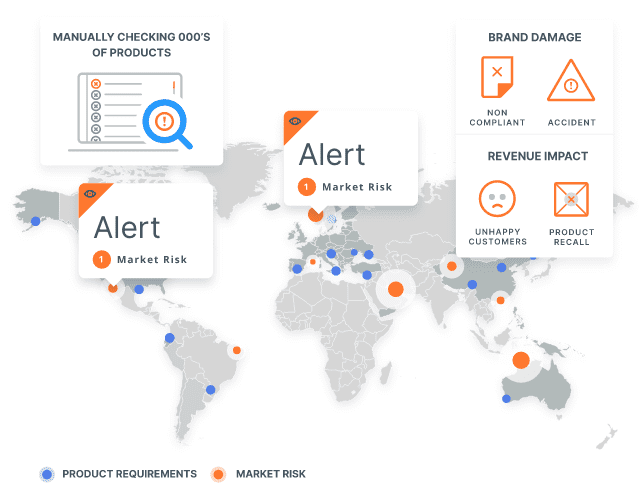
These are a few exercises that companies adopt to ensure compliance with all relevant regulations:
- Compliance audits & risk assessment
- Develop a compliance program
- Implement a regulatory compliance management system
It’s Not Easy..
Staying ahead of the regulatory curve can seem an impossible task at times when you are buried under a mountain of google alerts and excel sheets underpinned by manual and repetitive tasks.
We often hear, “It’s a little bit like drinking from a water hose with so much information that’s coming at you.”
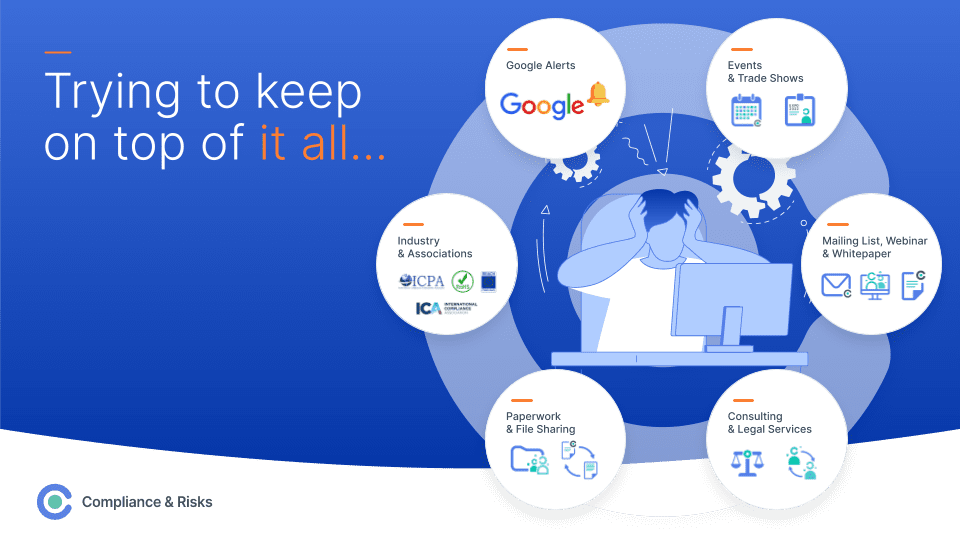
“It’s hard to keep up. The more we can automate, the better we can be at reusing the same solution to fulfil multiple requirements and drawing parallels between regulations.”
Environmental Compliance Specialist, Electronics parts Manufacturing company
In a world of fast-paced regulatory change and strict compliance obligations, organizations need to be proactive to stay ahead of the compliance curve.
Technology and digitisation are the need of the hour for organizations keen to accelerate and simplify their compliance processes.
See figure 4 (Source: C2P) below, a consolidated view of global regulatory compliance from C2P regulatory compliance solution.
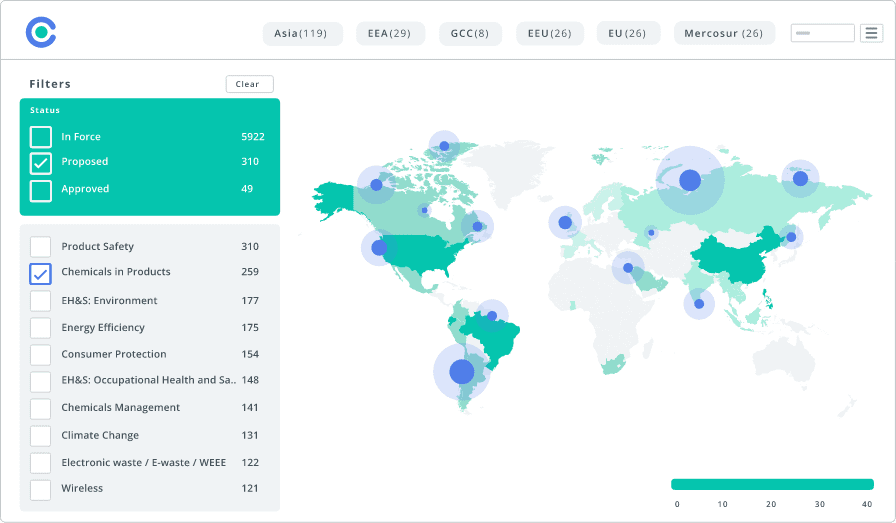
Leveraging C2P Regulatory Compliance Solution
C2P helps the world’s leading brands comply with global regulatory changes to achieve their business objectives in every market.
A few of the many benefits of C2P are:
- Accelerate time-to-market for products
- Reduce non-compliance risks that impact your ability to meet business goals and cause reputational damage
- Enable business continuity by digitizing your compliance process and building corporate memory
- Improve efficiency and enable your team to focus on business-critical initiatives rather than manual tasks
- Save time with access to Compliance & Risks’ extensive Knowledge Partner network
See Figure 5 below, a screenshot from C2P Regulatory Compliance Solution, showcasing the timeline of upcoming regulatory changes.
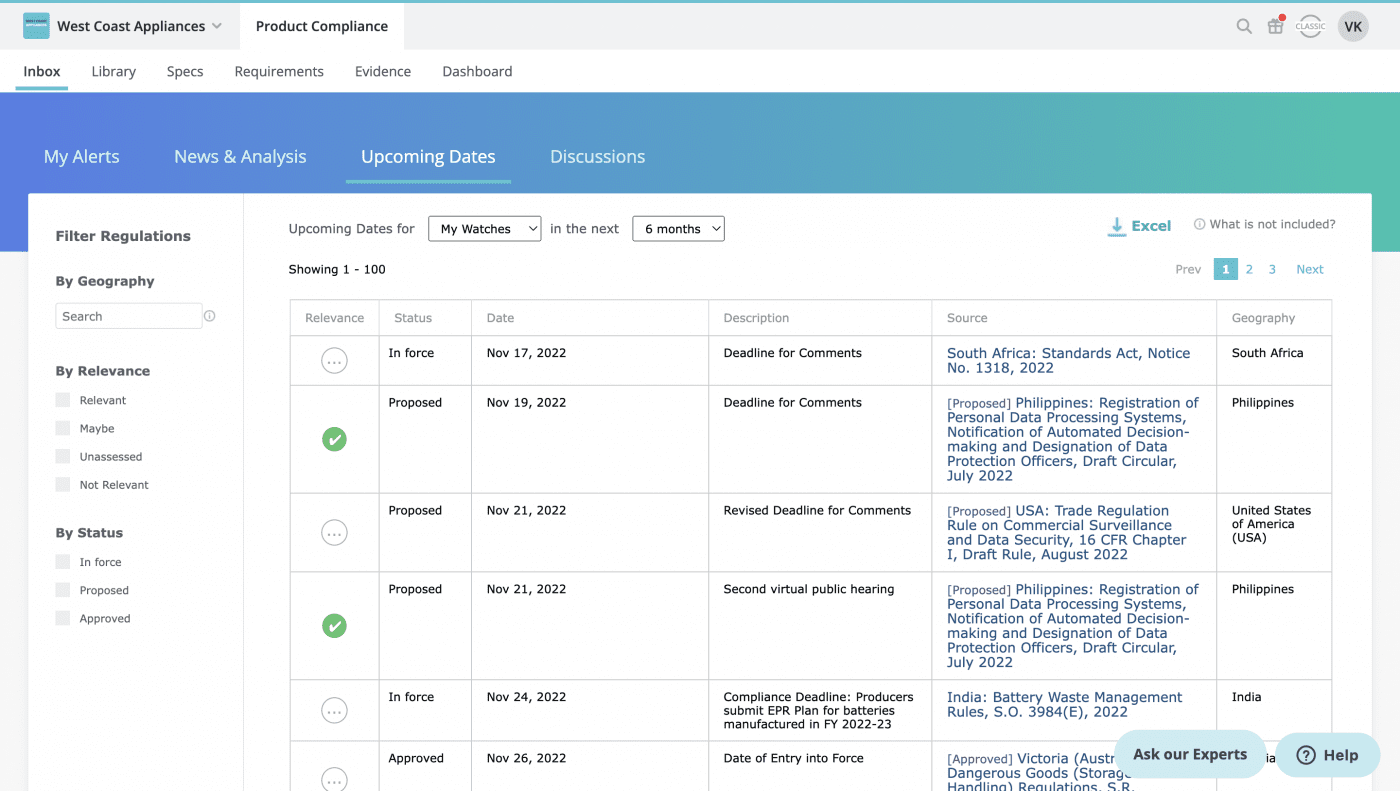
Interested in knowing more about the specific solutions that C2P has to offer for your compliance needs?
Talk to us to know more.


